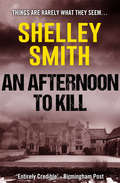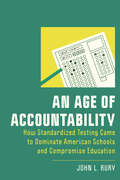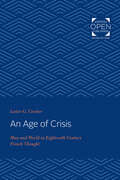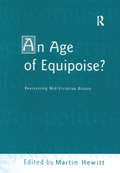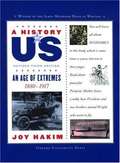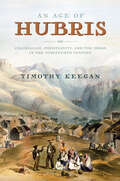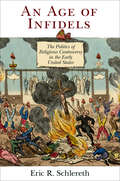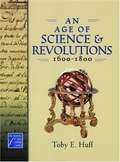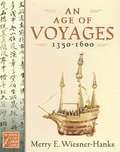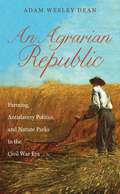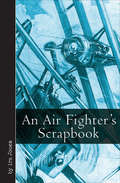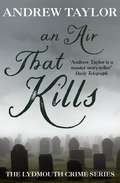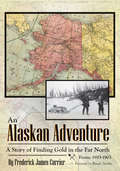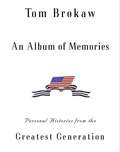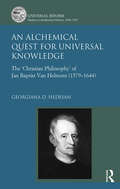- Table View
- List View
An Afro-Indigenous History of the United States
by Kyle T. MaysThe first intersectional history of the Black and Native American struggle for freedom in our country that also reframes our understanding of who was Indigenous in early AmericaBeginning with pre-Revolutionary America and moving into the movement for Black lives and contemporary Indigenous activism, Afro-Indigenous historian, Kyle T. Mays argues that the foundations of the US are rooted in antiblackness and settler colonialism, and that these parallel oppressions continue into the present. He explores how Black and Indigenous peoples have always resisted and struggled for freedom, sometimes together, and sometimes apart. Whether to end African enslavement and Indigenous removal or eradicate capitalism and colonialism, Mays show how the fervor of Black and Indigenous peoples calls for justice have consistently sought to uproot white supremacy.Mays uses a wide-array of historical activists and pop culture icons, &“sacred&” texts, and foundational texts like the Declaration of Independence and Democracy in America. He covers the civil rights movement and freedom struggles of the 1960s and 1970s, and explores current debates around the use of Native American imagery and the cultural appropriation of Black culture. Mays compels us to rethink both our history as well as contemporary debates and to imagine the powerful possibilities of Afro-Indigenous solidarity.
An Afterlife for the Khan: Muslims, Buddhists, and Sacred Kingship in Mongol Iran and Eurasia
by Dr. Jonathan Z. BrackIn the Mongol Empire, the interfaith court provided a contested arena for a performance of the Mongol ruler’s sacred kingship, and the debate was fiercely ideological and religious. At the court of the newly established Ilkhanate, Muslim administrators, Buddhist monks, and Christian clergy all attempted to sway their imperial overlords, arguing fiercely over the proper role of the king and his government, with momentous and far-reaching consequences. Focusing on the famous but understudied figure of the grand vizier Rashid al-Din, a Persian Jew who converted to Islam, Jonathan Z. Brack explores the myriad ways Rashid al-Din and his fellow courtiers investigated, reformulated, and transformed long-standing ideas of authority and power. Out of this intellectual ferment of accommodation, resistance, and experimentation, they developed a completely new understanding of sacred kingship. This new ideal, and the political theology it subtends, would go on to become a central justification in imperial projects across Eurasia in the centuries that followed. An Afterlife for the Khan offers a powerful cultural and intellectual history of this pivotal moment for Islam and empire in the Middle East and Asia.
An Afternoon to Kill
by Shelley SmithThis Victorian mystery with twists and turns will keep you gripped until the very last page: “Prim and petticoated and poisonous” (Kirkus Reviews, starred review). Lancelot Jones was on his way to his first job—as tutor to an Indian Rajah’s son. But the Rajah’s ancient plane and incompetent pilot dropped him in the middle of a desert. The wrong desert, at that. Seeking shade, he finds the only dwelling of any size within miles and its curious owner, an old Englishwoman named Alva Hine. Taking him into her home, Alva begins to tell Lancelot an incredible tale. She tells him a strange story of a summer fifty years ago, of love and hate and murder in a respectable middle-class Victorian household . . . And as the afternoon wears on, Alva’s story begins to take on an increasingly sinister note for the weary Mr. Jones. Soon, he has more than one reason to want to hear the end of the story . . . “[An] amazing novel . . . I am completely under the spell of this fine writer.” —Pretty Sinister Books “Entirely credible.” —Birmingham Post
An Age of Accountability: How Standardized Testing Came to Dominate American Schools and Compromise Education (New Directions in the History of Education)
by John L. RuryAn Age of Accountability highlights the role of test-based accountability as a policy framework in American education from 1970 to 2020. For more than half a century, the quest to hold schools and educators accountable for academic achievement has relied almost exclusively on standardized assessment. The theory of change embedded in almost all test-based accountability programs held that assessment with stipulated consequences could lead to major improvements in schools. This was accomplished politically by proclaiming lofty goals of attaining universal proficiency and closing achievement gaps, which repeatedly failed to materialize. But even after very clear disappointments, no other policy framework has emerged to challenge its hegemony. The American public today has little confidence in institutions to improve the quality of goods and services they provide, especially in the public sector. As a consequence, many Americans continue to believe that accountability remains a vital necessity, even if educators and policy scholars disagree.
An Age of Crisis: Man and World in Eighteenth Century French Thought (Goucher Colloquium)
by Lester G. CrockerOriginally published in 1959. This book examines the French Enlightenment by analyzing critical thought in eighteenth-centruy France. It examines the philosophes' views on evil, free will and determinism, and human nature. This is an interesting group to look at, according to Crocker, because French Enlightenment thinkers straddled two vastly different time periods.
An Age of Empires, 1200-1750 (The Medieval and Early Modern World #4)
by Marjorie Wall BinghamThe Age of Empires includes some of the most colorful, ruthless, and restless figures in all of history. During this time Genghis Khan told his troops to "fall upon the enemy like falcons," Ivan the Terrible expelled Mongol invaders from Russia but murdered his own son in a fit of rage, and Babur the Tiger ruled India, combining ferocity on the battlefield with a love of books and poetry.
An Age of Equipoise? Reassessing mid-Victorian Britain
by Martin HewittThe Age of Equipoise by W.L Burn was published in 1964 and became a central text in the canon of interpretations of the Victorian period. The book subsequently fell out of favour but recent claims to establish a new interpretative standard have, paradoxically, prompted reviewers to cast back to Burn's work as the orthodox standard against which such claims should be judged. The essays in this volume by British and American contributors all engage, to varying degrees, with the notion of 'equipoise' and how it can help to illuminate the mid-Victorian period in ways which alternative formulations cannot. Some of the chapters develop arguments embedded in Burn's own book; others take up issues largely absent in The Age of Equipoise, such as the position of children, Britain's interaction with the wider world, and the threats the period experienced to its concept of masculine identity. Together the essays demonstrate the intricacy and turbulence of the forces of cohesion in Victorian society, along with the success of that culture in achieving a working, if shifting, modus vivendi. Moreover, they substantiate the argument that, whatever the limitations of Burn's work, 'equipoise' deserves rehabilitation as a powerful conceptual framework for making sense of mid-Victorian Britain. About the Editor: Martin Hewitt is Director of the Leeds Centre for Victorian Studies and editor of the Journal of Victorian Culture. With Robert Poole he has recently produced an edition of The Diaries of Samuel Bamford, 1858-61 (Sutton, 2000).
An Age of Extremes (A History of Us #8)
by Joy HakimFor the captains of industry men like Andrew Carnegie, John D. Rockefeller, J. P. Morgan, and Henry Ford, the Gilded Age was a time of big money. Technology boomed with the invention of trains, telephones, electric lights, harvesters, vacuum cleaners, and more. But for millions of immigrant workers, it was a time of big struggles, with adults and children alike working 12 to 14 hours a day under extreme, dangerous conditions. The disparity between the rich and the poor was dismaying, which prompted some people to action. In An Age of Extremes, you'll meet Mother Jones, Ida Tarbell, Big Bill Haywood, Sam Gompers, and other movers and shakers, and get swept up in the enthusiasm of Teddy Roosevelt. You'll also watch the United States take its greatest role on the world stage since the Revolution, as it enters the bloody battlefields of Europe in World War I. [This text is listed as an example that meets Common Core Standards in English language arts in grades 4-5 at http://www.corestandards.org.]
An Age of Hubris: Colonialism, Christianity, and the Xhosa in the Nineteenth Century (Reconsiderations in Southern African History)
by Timothy KeeganAn Age of Hubris is the first comprehensive overview of the impact of missionary enterprise on the Xhosa chiefdoms of South Africa in the first half of the nineteenth century, chronicling a world punctuated by war and millenarian eruptions, and the steady encroachment of settler land hunger and colonial hegemony. With it, Timothy Keegan contributes new approaches to Xhosa history and, most important, a new dimension to the much-trodden but still vital topic of the impact—cultural, social, and political—of missionary activity among African peoples.The most significant historical works on the Xhosa have either become dated, foreground imperial-colonial history, or remain heavily theoretical in nature. In contrast, Keegan draws fruitfully on the rich Africanist comparative and anthropological literature now available, as well as extant primary sources, to foreground the Xhosa themselves in this crucial work. In so doing, he highlights the ways in which Africans utilized new ideas, resources, and practices to make sense of, react to, and resist the forces of colonial dispossession confronting them, emphasizing missionary frustration and African agency.
An Age of Infidels
by Eric R. SchlerethHistorian Eric R. Schlereth places religious conflict at the center of early American political culture. He shows ordinary Americans--both faithful believers and Christianity's staunchest critics--struggling with questions about the meaning of tolerance and the limits of religious freedom. In doing so, he casts new light on the ways Americans reconciled their varied religious beliefs with political change at a formative moment in the nation's cultural life.After the American Revolution, citizens of the new nation felt no guarantee that they would avoid the mire of religious and political conflict that had gripped much of Europe for three centuries. Debates thus erupted in the new United States about how or even if long-standing religious beliefs, institutions, and traditions could be accommodated within a new republican political order that encouraged suspicion of inherited traditions. Public life in the period included contentious arguments over the best way to ensure a compatible relationship between diverse religious beliefs and the nation's recent political developments.In the process, religion and politics in the early United States were remade to fit each other. From the 1770s onward, Americans created a political rather than legal boundary between acceptable and unacceptable religious expression, one defined in reference to infidelity. Conflicts occurred most commonly between deists and their opponents who perceived deists' anti-Christian opinions as increasingly influential in American culture and politics. Exploring these controversies, Schlereth explains how Americans navigated questions of religious truth and difference in an age of emerging religious liberty.
An Age of Risk: Politics and Economy in Early Modern Britain
by Emily NacolIn An Age of Risk, Emily Nacol shows that risk, now treated as a permanent feature of our lives, did not always govern understandings of the future. Focusing on the epistemological, political, and economic writings of Thomas Hobbes, John Locke, David Hume, and Adam Smith, Nacol explains that in seventeenth- and eighteenth-century Britain, political and economic thinkers reimagined the future as a terrain of risk, characterized by probabilistic calculation, prediction, and control. In these early modern sources, Nacol contends, we see three crucial developments in thought on risk and politics. While early modern thinkers differentiated uncertainty about the future from probabilistic calculations of risk, they remained attentive to the ways uncertainty and risk remained in a conceptual tangle, a problem that constrained good decision making. They developed sophisticated theories of trust and credit as crucial background conditions for prudent risk-taking, and offered complex depictions of the relationships and behaviors that would make risk-taking more palatable. They also developed two narratives that persist in subsequent accounts of risk--risk as a threat to security, and risk as an opportunity for profit. Looking at how these narratives are entwined in early modern thought, Nacol locates the origins of our own ambivalence about risk-taking. By the end of the eighteenth century, she argues, a new type of political actor would emerge from this ambivalence, one who approached risk with fear rather than hope.By placing a fresh lens on early modern writing, An Age of Risk demonstrates how new and evolving orientations toward risk influenced approaches to politics and commerce that continue to this day.
An Age of Science and Revolutions, 1600-1800 (The Medieval and Early Modern World #6)
by Toby E. HuffAn Age of Science and Revolutions, 1600-1800, tells the colorful story of a pivotal period in human history, an era that is crucial to understanding our own times. The expansion of trade and city life, the spread and reform of religious institutions, the rise of regional empires and local feudal regimes, and revolutionary advances in science and technology laid the foundation for the modern world. Told through the words and experiences of the people who lived it- kings, queens, and commoners, priests and lay people, explorers, scientists, artists, and world travelers- this is a world history for a new generation.
An Age of Voyages, 1350-1600 (The Medieval and Early Modern World #5)
by Merry E. Wiesner-HanksCultural life flowered from the mid-fifteenth century in the Italian city-states, many of which profited from the new trading opportunities that growing world networks permitted. Contact among regions of the world expanded, bringing new ideas and prompting an appreciation of arts and letters--not only of the present but of the past. In Italy this cultural flowering was known at first as the renaissance of arts and letters, soon shortened to just "Renaissance" to accommodate cultural ingredients that came from beyond Europe. Italian and northern European cultural expansion benefited from similar retrieval of ancient knowledge in the Islamic world and East Asia. Like the Italians, the Chinese had grown even wealthier from the extensive links to global commerce provided by the Mongol Empire, but once thrown off, their cultural life flourished under the Ming. Cultural knowledge and the arts spread across Asia and into Europe. As part of state-building, the Ming nourished commerce but also rejected the cosmopolitan Buddhist legacy that arrived from central and south Asia. To strengthen dynastic Chinese rule, the Ming challenged Buddhism with a revival of age-old concern for the Confucian values that had languished under the Mongols. Foremost among these new Confucians was Wu Yube, so expert in his teachings that he attracted a wide coterie of disciples. In India, Nanak, an educated employee of an Afghan prince, sparked the founding of Sikhism. A similar search for reviving fundamental religious values occurred in Europe, where Martin Luther challenged the practices of the Catholic church, ushering in Protestantism. Religious reform and resistance to it were closely connected to the state-building efforts of enterprising monarchs such as Henry VIII of England. India likewise experienced a fervent movement to revive pure, ancient religious practices. Fourteenth and fifteenth century global trade and long-distance ventures such as those made by the Ming and then by the Portuguese further inspired and advanced these worldwide cultural and political developments. A brisk Indian Ocean trade flourished. Economic change ensued with the arrival of New World silver on the global market. The advance of printing not only furthered the cause of religious reform and state-building globally; it also helped globalize knowledge and intellectual experimentation. People of great power and those of more limited means came to live their lives differently because of this expanding web of shared knowledge and trade. Cities flourished, the enslavement of native Americans came to replace their use as human sacrifices, and diseases migrated at a more rapid pace and greater devastation than perhaps ever before.
An Agrarian Republic
by Adam Wesley DeanThe familiar story of the Civil War tells of a predominately agricultural South pitted against a rapidly industrializing North. However, Adam Wesley Dean argues that the Republican Party's political ideology was fundamentally agrarian. Believing that small farms owned by families for generations led to a model society, Republicans supported a northern agricultural ideal in opposition to southern plantation agriculture, which destroyed the land's productivity, required constant western expansion, and produced an elite landed gentry hostile to the Union. Dean shows how agrarian republicanism shaped the debate over slavery's expansion, spurred the creation of the Department of Agriculture and the passage of the Homestead Act, and laid the foundation for the development of the earliest nature parks.Spanning the long nineteenth century, Dean's study analyzes the changing debate over land development as it transitioned from focusing on the creation of a virtuous and orderly citizenry to being seen primarily as a "civilizing" mission. By showing Republicans as men and women with backgrounds in small farming, Dean unveils new connections between seemingly separate historical events, linking this era's views of natural and manmade environments with interpretations of slavery and land policy.
An Aide De Camp Of Lee - Being The Papers Of Colonel Charles Marshall,: Assistant Adjutant General On The Staff Of Robert E. Lee [Illustrated Edition]
by Colonel Charles Marshall Major-General Sir Frederick MauriceIncludes 19 Portraits and 6 maps."Charles Marshall was appointed aide-de-camp to Robert E. Lee on 21 March 1862, and from then until the surrender, he stood at the general's side. A military secretary, he compiled a remarkable, intimate account of the day-to-day wartime experience of the Confederacy's most celebrated--and enigmatic--military figure.Marshall's papers are of three sorts: those intended for a projected life of Lee, those intended for an account of the campaign at Gettysburg, and notes on events of the war. Collected here, these papers provide a unique firsthand look at Lee's generalship-from the most complete account ever given of the fateful orders issued to Jeb Stuart at Gettysburg, to the only testimony from a Southern witness of the scene in McLean's house at Appomattox.Marshall's commentary addresses some of the war's more intriguing questions: Whose idea was it to fight the second Manassas? What caused Jackson's delays in the Battles of the Seven Days? Who devised the flank march around Hooker at Chancellorsville? This book's insights into Robert E. Lee and his military strategy and its close-up report on the Confederacy's war qualify it as an indispensable part of America's historical record."-Print Ed.
An Air Fighter's Scrapbook (Vintage Aviation Library)
by Ira JonesA classic memoir of the early days of aviation by a longtime Royal Air Force pilot, including his harrowing, exhilarating adventures in the Great War. Ira &“Taffy&” Jones was a well-known air fighter during the First World War, having scored about forty victories flying SE5 scouts in France with 74 Squadron. Familiar in flying circles, Jones recorded stories drawn from his own experiences during the war and wrote of the many personalities he had met or known by association, both during the war and in the postwar flying years. An Air Fighter&’s Scrapbook recreates the atmosphere of the days of the biplane, of wartime flying, of early peacetime adventures in the air, the development of civil aviation, and breathtaking record-beating flights—all evoking the sheer delight in flying that characterized those early years.
An Air That Kills: The Lydmouth Crime Series Book 1
by Andrew Taylor'Andrew Taylor is a master story-teller' Daily TelegraphFrom the No.1 bestselling author of The Ashes of London and Fire of Court, this is the first instalment in the acclaimed Lydmouth seriesWorkmen in the small market town of Lydmouth are demolishing an old cottage. A sledgehammer smashes into what looks like a solid wall. Instead, layers of wallpaper conceal the door of a locked cupboard which holds a box - and in the box is the skeleton of a young baby. Items within the box suggest that the baby was entombed early in the nineteenth century, but when another man is also found dead, the evidence suggests that the baby's death is more recent and that a killer is on the loose. For Journalist Jill Francis, newly arrived from London, this looks like her first story to chase ... 'The most under-rated crime writer in Britain today' Val McDermid'Captures perfectly the drab atmosphere and cloying morality of the 1950s . . . Taylor is an excellent writer. He plots with care and intelligence and the solution to the mystery is satisfyingly chilling' The Times 'There is no denying Taylor's talent, his prose exudes a quality uncommon among his contemporaries' Time Out 'Andrew Taylor is a master story-teller' Daily Telegraph
An Air That Kills: The Lydmouth Crime Series Book 1
by Andrew Taylor'Andrew Taylor is a master story-teller' Daily TelegraphFrom the No.1 bestselling author of The Ashes of London and Fire of Court, this is the first instalment in the acclaimed Lydmouth seriesWorkmen in the small market town of Lydmouth are demolishing an old cottage. A sledgehammer smashes into what looks like a solid wall. Instead, layers of wallpaper conceal the door of a locked cupboard which holds a box - and in the box is the skeleton of a young baby. Items within the box suggest that the baby was entombed early in the nineteenth century, but when another man is also found dead, the evidence suggests that the baby's death is more recent and that a killer is on the loose. For Journalist Jill Francis, newly arrived from London, this looks like her first story to chase ... 'The most under-rated crime writer in Britain today' Val McDermid'Captures perfectly the drab atmosphere and cloying morality of the 1950s . . . Taylor is an excellent writer. He plots with care and intelligence and the solution to the mystery is satisfyingly chilling'The Times 'There is no denying Taylor's talent, his prose exudes a quality uncommon among his contemporaries' Time Out 'Andrew Taylor is a master story-teller' Daily Telegraph
An Air of Glory
by Sarah NeilanIt is the year 1801. Polly Forster is a beautiful but penniless Northumbrian girl who longs to escape from a stifling, unhappy existence as a companion to a miserly spinster cousin. And now her chance has come. The romantic and mysterious man she has met at the home of a friend has charged her with a dangerous mission--to carry an urgent and unknown message to the last remaining Jacobites among the Scottish settlers in Nova Scotia. In a moment of mad passion she accepts the charge--and his offer of a rendezvous in Canada and a promise of marriage. Polly embarks on the Agnes MacVeagh, a sailing ship bound for Pictou, Nova Scotia, with a cargo of refugees from the Highland Clearances in Scotland. But on the hazardous voyage Polly is assailed by doubts. New friends have opened wider vistas for her, and unexpected incidents force her to question her reckless actions and her relationship with Lucian, a man whom she barely knows. Does he really love her? What will happen if he breaks his word? What is in the Jacobite letter? And how much does the British government agent on the ship, the handsome, fascinating yet enigmatic Augustus Fenwick, know about Polly's curious involvement in a treasonable enterprise that is punishable by hanging? Polly must discover the answers to these and many other questions before the perilous voyage is ended if she is to find the happiness she seeks in the new world.
An Air of Treason: A Sir Robert Carey Mystery (Sir Robert Carey Series #6)
by P F ChisholmAfter his hair-raising adventures in London, Sir Robert Carey has finally tracked down Queen Elizabeth, who orders him to investigate the most dangerous cold case of her reign - the mysterious 1560 death of Amy Dudley (née Robsart), unloved wife of Robert Dudley, Earl of Leicester. Some thirty years back, the late Dudley was Elizabeth's favorite suitor and potential husband. The Queen has since been one of the most obvious suspects in arranging Amy's murder. This makes Carey deeply uneasy with his sleuthing role. Then someone manages to poison Carey with belladonna, which temporarily blinds him. Worse still, the steadfast Sergeant Dodd has disappeared on the road from London. As the Queen's scandalous past collides with her magnificent State entrance into Oxford, can Carey rally in time to find both Dodd and the true murderer of Amy Robsart?
An Alaskan Adventure: A Story of Finding Gold in the Far North From: 1893-1903
by Frederick James CurrierAs the descendant of early miners, a grandfather who prospected for gold in the Fairbanks area in 1908 and a father who mined from the 1920s through the early 1940s, my interest and fascination with Frederick Currier's manuscript was easily spiked. Currier's quest for gold from 1893 into the 1900s was an admirable pursuit. His account of prospecting ventures in 1898 on the Chena River near Fairbanks is spellbinding, especially in his use of a sternwheeler and his building of cabins as he prospected toward the headwaters. I have great admiration for the early gold prospectors like Frederick Currier since I have sunk a couple of shafts to bedrock with a windlass and know the effort and determination required. The power of a few nuggets can change a person's direction in life. Currier's, An Alaskan Adventure, is well worth reading—more than once.
An Album of Maya Architecture (Native American)
by Tatiana ProskouriakoffMagnificent guide presents 36 sites from Central America and southern Mexico as they appeared more than a thousand years ago: Temple of the Cross, Palenque; Acropolis and Maya sweat bath, Piedras Negras; Red House and north terrace at Chichén Itzá; more. Each illustration features text of archeological finds and line drawing of remains. 95 illustrations.
An Album of Memories: Personal Histories from the Greatest Generation
by Tom BrokawA seventeen-year-old who enlisted in the army in 1941 writes to describe the Bataan Death March. Other members of the greatest generation describe their war — in such historic episodes as Guadalcanal, the D-Day invasion, the Battle of the Bulge, and Midway — as well as their life on the home front. In this beautiful American family album of stories, reflections, memorabilia, and photographs, history comes alive and is preserved, in people’s own words and through photographs and time lines that commemorate important dates and events. Starting with the Depression and Pearl Harbor, on through the war in Europe and the Pacific, this unusual book preserves a people’s rich historical heritage and the legacy of the heroism of a nation.
An Alchemical Quest for Universal Knowledge: The ‘Christian Philosophy’ of Jan Baptist Van Helmont (1579-1644) (Universal Reform: Studies in Intellectual History, 1550-1700)
by Georgiana D. HedesanHistory of science credits the Flemish physician, alchemist and philosopher Jan Baptist Van Helmont (1579-1644) for his contributions to the development of chemistry and medicine. Yet, as this book makes clear, focussing on Van Helmont's impact on modern science does not do justice to the complexity of his thought or to his influence on successive generations of intellectuals like Robert Boyle or Gottfried Leibniz. Revealing Van Helmont as an original thinker who sought to produce a post-Scholastic synthesis of religion and natural philosophy, Georgiana Hedesan reconstructs his ambitious quest for universal knowledge as it emerges from the text of the Ortus medicinae (1648). Published after Van Helmont's death by his son, the work can best be understood as a compilation of finished and unfinished treatises, the historical product of a life unsettled by religious persecution and personal misfortune. The present book provides a coherent account of Van Helmont's philosophy by analysing its main tenets. Divided into two parts, the study opens with a background to Van Helmont's concept of an alchemical Christian philosophy, demonstrating that his outlook was deeply grounded in the tradition of medical alchemy as reformed by Theophrastus von Hohenheim, called Paracelsus (1493-1541). It then reconstitutes Van Helmont's biography, while giving a historical dimension to his intellectual output. The second part reconstructs Van Helmont's Christian philosophy, investigating his views on God, nature and man, as well as his applied philosophy. Hedesan also provides an account of the development of Van Helmont's thought throughout his life. The conclusion sums up Van Helmont's intellectual achievement and highlights avenues of future research.
An Alchemy of Masques and Mirrors: Book One in the Risen Kingdoms (The Risen Kingdoms #1)
by Curtis CraddockA delightful and engrossing fantasy debut featuring an intelligent heroine and her guardian, a royal musketeer.In a world of soaring continents and bottomless skies, where a burgeoning new science lifts skyships into the cloud-strewn heights, and ancient blood-borne sorceries cling to a fading glory, Princess Isabelle des Zephyrs is about to be married to a man she has barely heard of, the second son of a dying king in an empire collapsing into civil war.Born without the sorcery that is her birthright but with a perspicacious intellect, Isabelle believes her marriage will stave off disastrous conflict and bring her opportunity and influence. But the last two women betrothed to this prince were murdered, and a sorcerer-assassin is bent on making Isabelle the third. Aided and defended by her loyal musketeer, Jean-Claude, Isabelle plunges into a great maze of prophecy, intrigue, and betrayal, where everyone wears masks of glamour and lies. Step by dangerous step, she unravels the lies of her enemies and discovers a truth more perilous than any deception.At the Publisher's request, this title is being sold without Digital Rights Management Software (DRM) applied.


